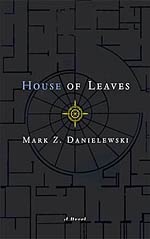
![]() verkisto
verkisto
7/26/2016
![]()
For me, story is king. No matter what else an author wants to put into his book, if the story fails to satisfy, then the book won't work for me. This is part of the reason why, when I first attempted to read this book some seven or eight years ago, I ultimately abandoned it. It was too much form and not enough function, even though the function beneath the form was intriguing.
Earlier this year, I decided to give the book another try. I figured maybe (maybe) I had matured enough to be able to wade through the form to find the function beneath. At the very least, being on the kind of reading kick I've been on for the past two years, I figured I would be able to persevere through it.
The problem is with the way the story is presented. The plot here -- regarding an impossible house covered in a documentary that apparently doesn't exist -- is intriguing, but it's surrounded by a ton of details that, honestly, feel unnecessary. It's filled with a ton of hidden information and a few puzzles (even the index has some treasures to uncover, if you're that committed), and the author even buried his own name in the story via an acrostic in the footnotes. Yes, footnotes. These aren't the kinds of footnotes you would find in a Terry Pratchett or Jonathan Stroud book, either; these are actual, informational footnotes to sources that don't even exist in the real world. Some of the footnotes go on for pages. In some of those, the story develops further, but others are just pages and pages of detailed examples of architecture or people, and serve no purpose to the story other than to give the reader a sense of disorientation that the characters experience. I didn't read those word for word; in fact, as soon as the narrative broke down into comma-separated phrases of any kind that went on for an extended length of time, I just jumped forward to the next paragraph. There were at least two point in the novel where I nearly gave up on it again because I couldn't get past all this kind of crap.
The thing is, the form of the book reflects its function: in one chapter, where the author examines labyrinths, the story is formatted within a small section of the page, surrounded by footnotes that take you from page to page, going forward and then back, some of the footnotes themselves having footnotes that you've already read; in another chapter, some of the characters are at the top of a lengthy staircase, others at the bottom, and depending on which characters are the focus of the narrative, the text is formatted at either the top or bottom of the page; in yet another chapter, a character is crawling through a small space, represented by the box of text on the page growing smaller and smaller along with the space. It's an intriguing way to format the book, and I can't deny that it works.
There are actually two stories taking place in this book, on within the main narrative itself, and another through the footnotes of a character who is compiling the book. His story is much less interesting, but no less necessary since an outside viewer is necessary to show the effects the main narrative has on an outside viewer. The core story, though, is pretty fascinating, and it helped that I waited so long to read it, since other readers have posted some thoughts and possible answers to some of the riddles buried in the book. In fact, just typing in "House of Leaves" and the page number took me to a wealth of information about whatever it was I was looking for.
The book is clever, and it's one of those books where you finish it and just admire it for the effort the author put into it. But it reminds me a little too much of 2001, a nearly three-hour movie with an intriguing story that could have been told in about 20 minutes had the director just stuck to the story instead of showing off how skilled he was. To put it another way, House of Leaves is a five-ounce story wrapped up in twelve pounds of obtuse. In this case, though, the extra effort to get past a lot of that detail was worth it.